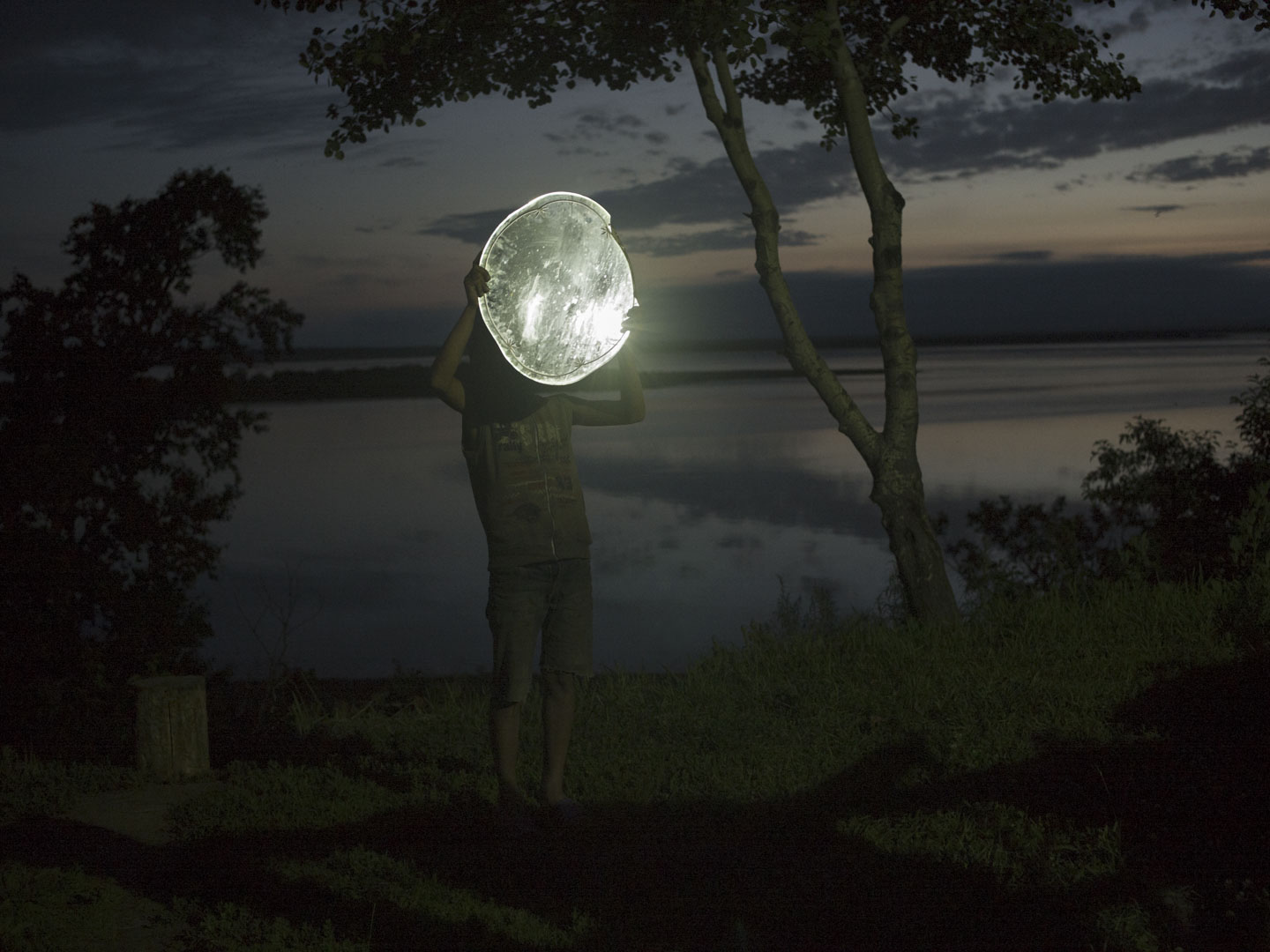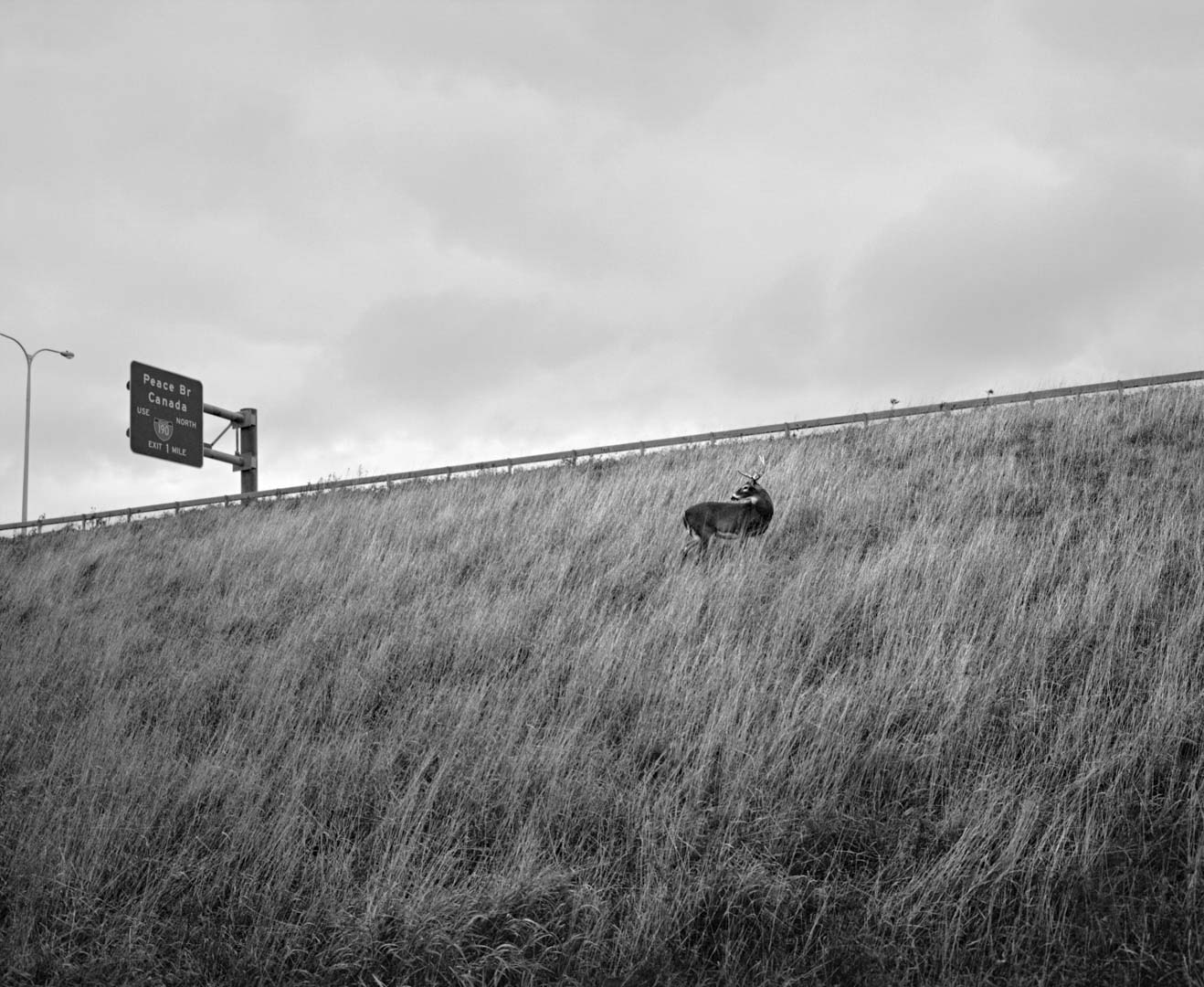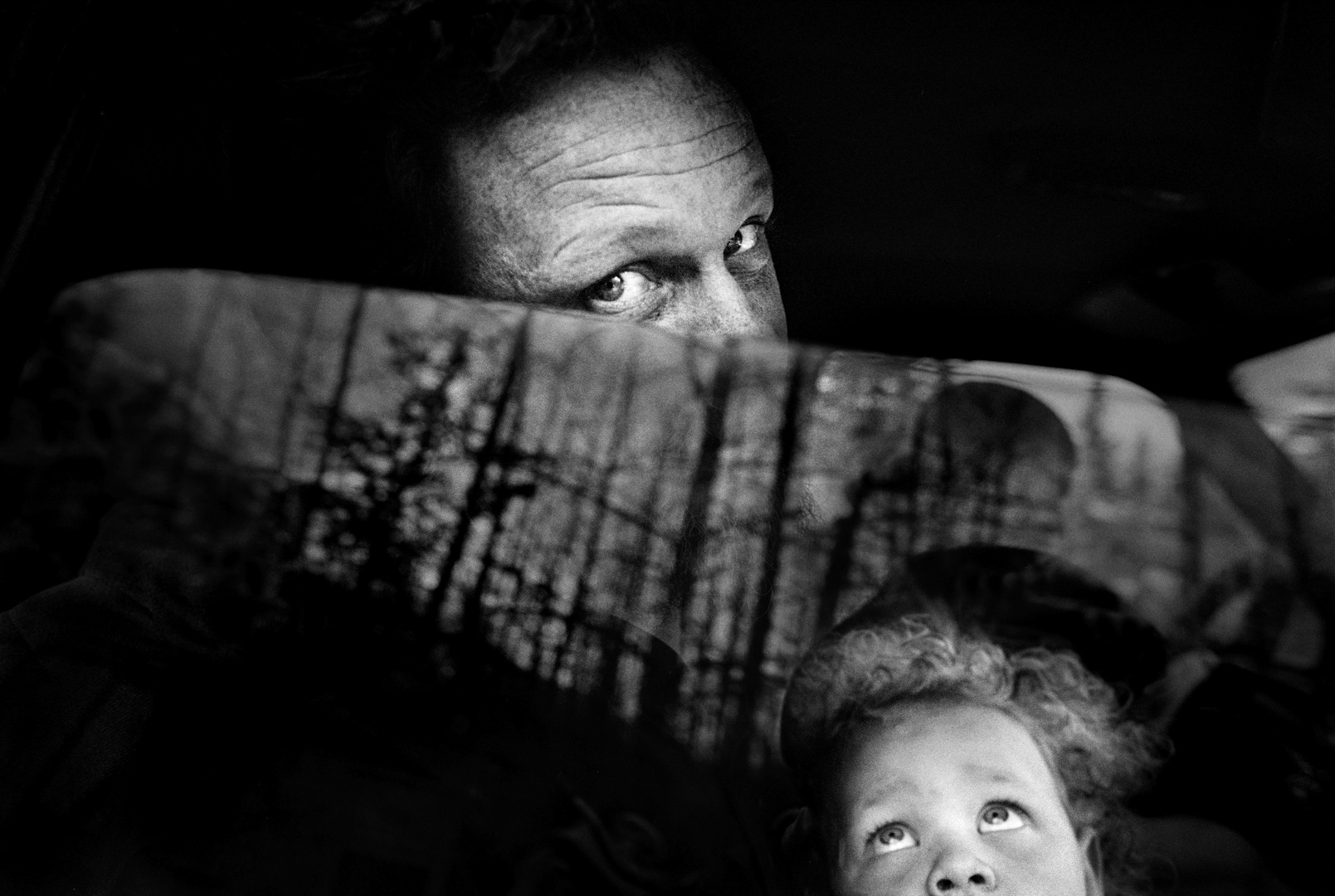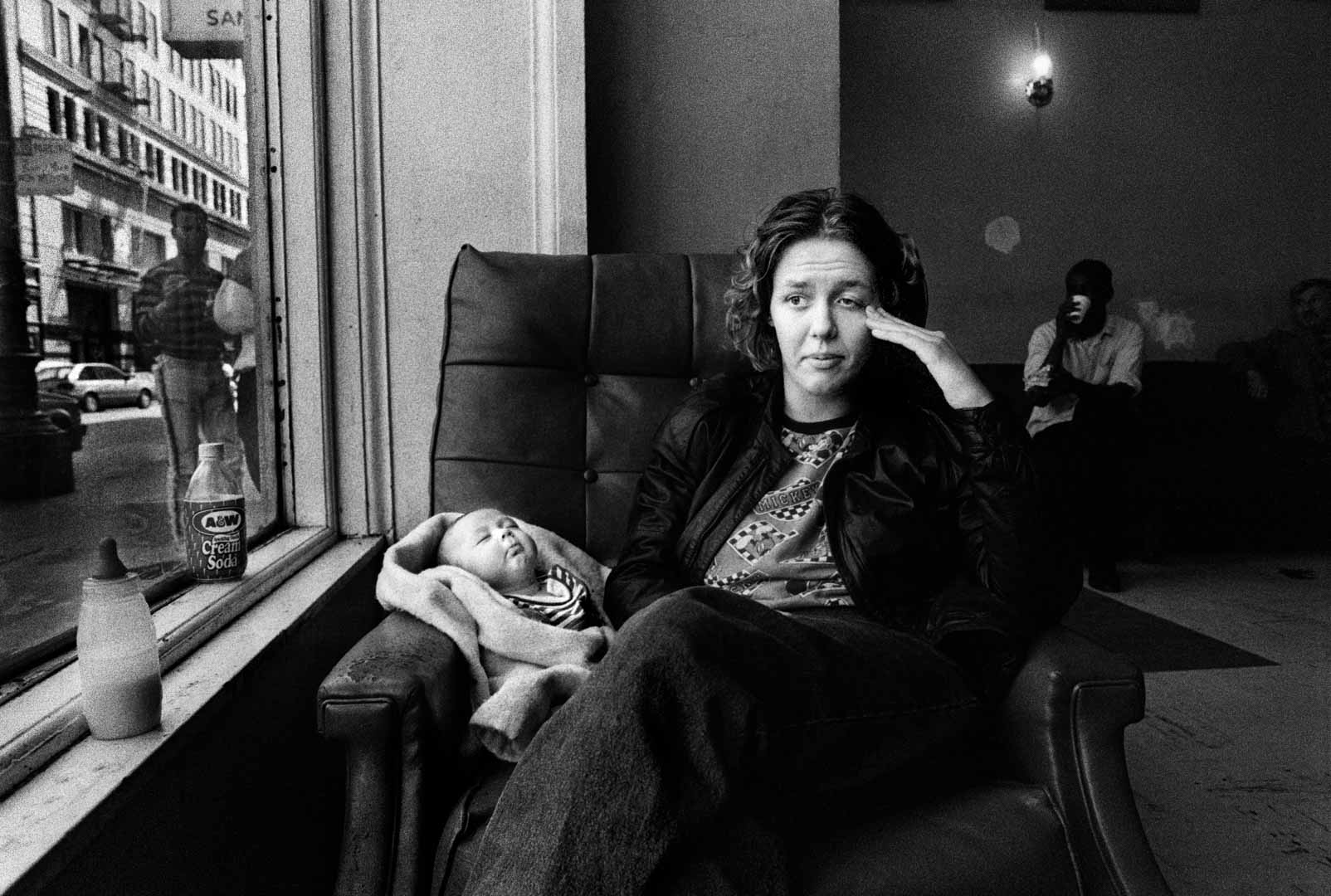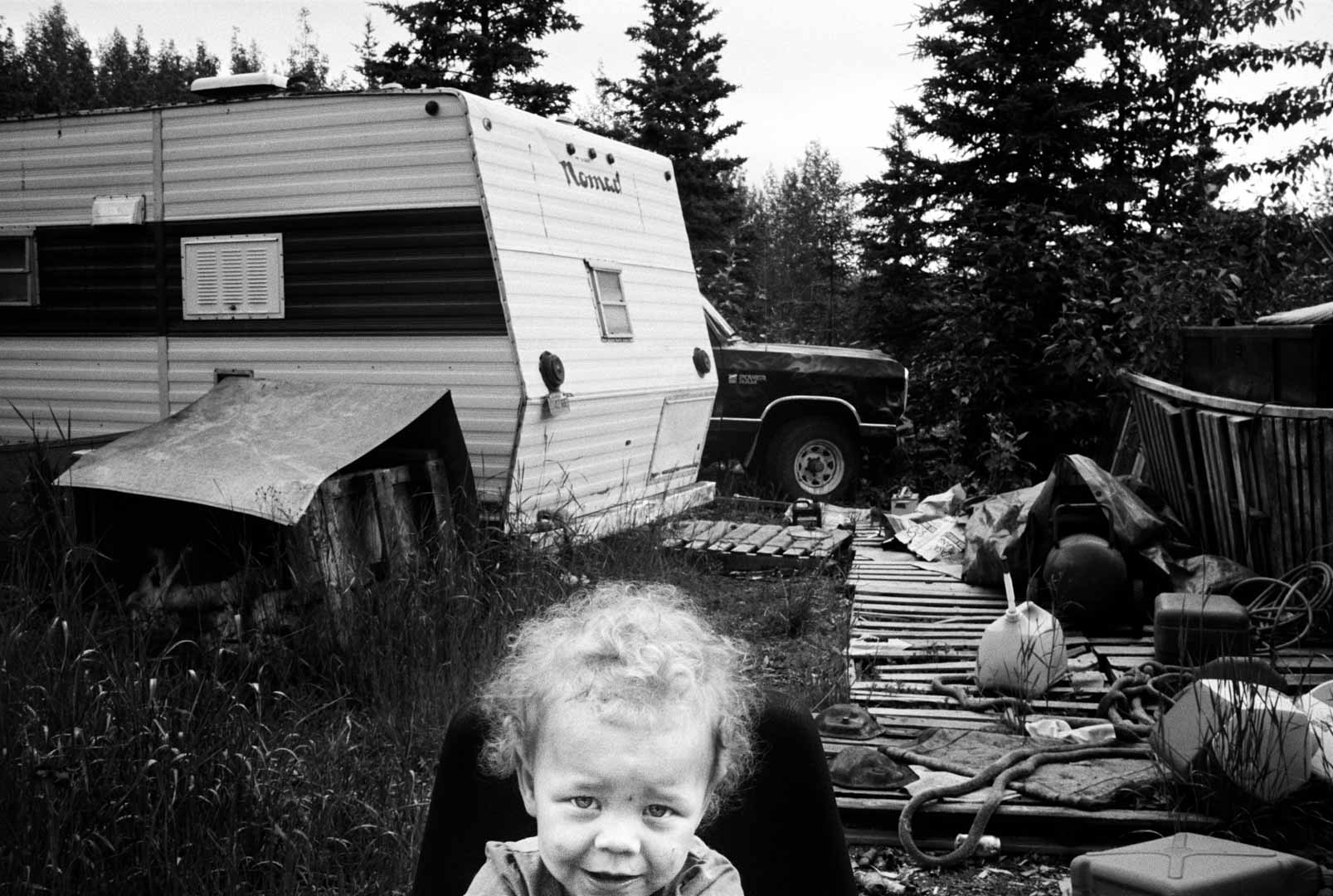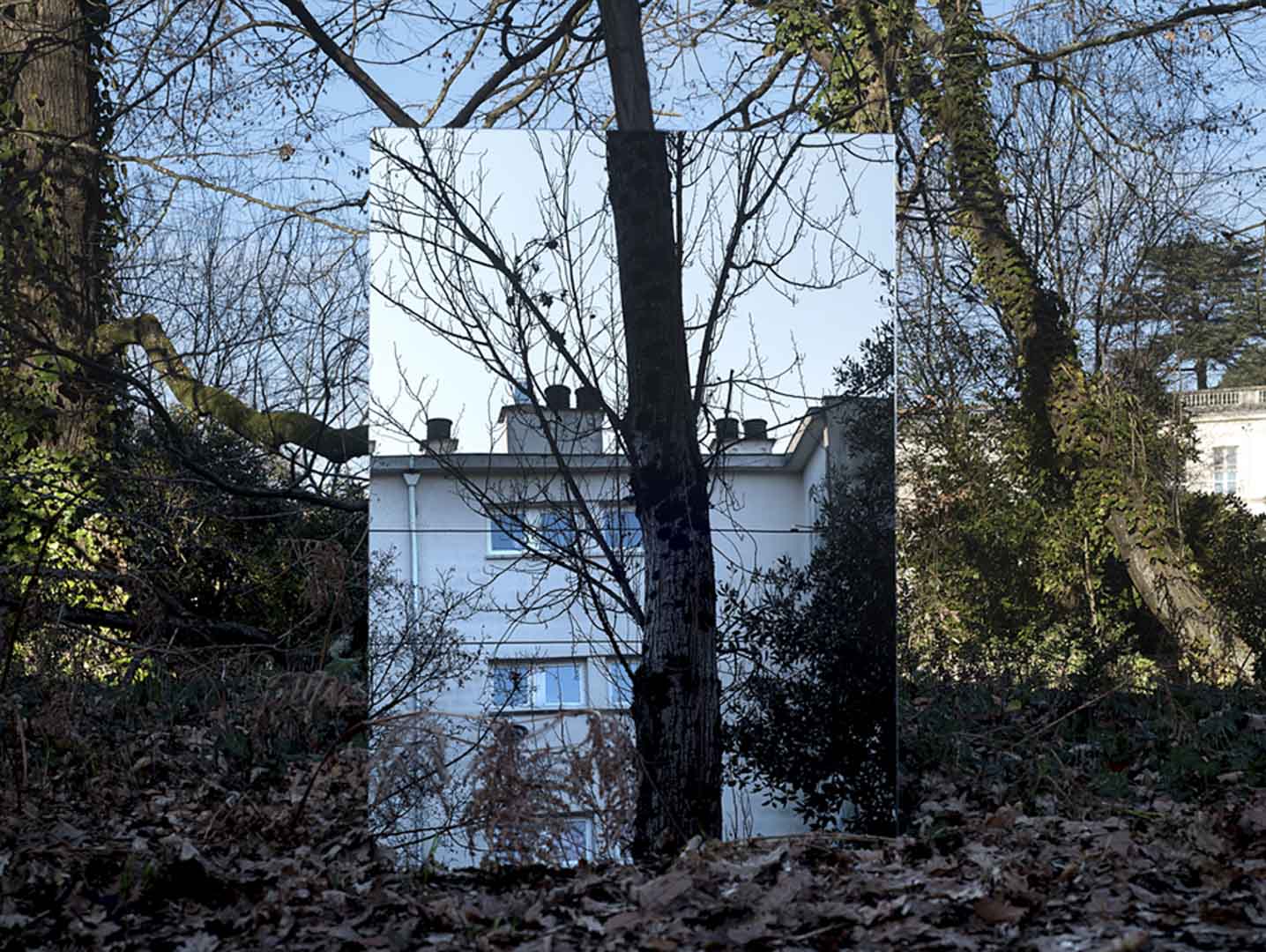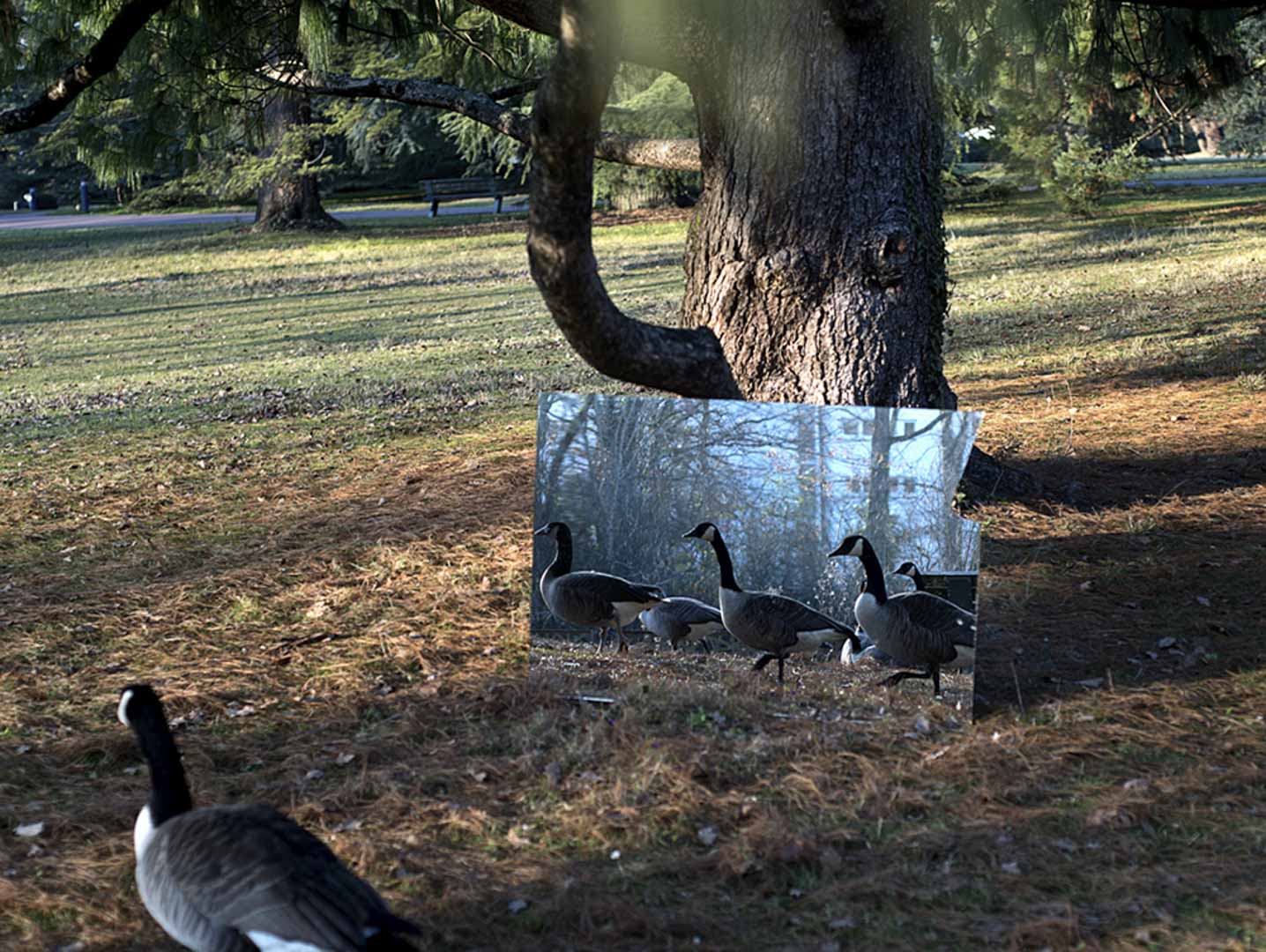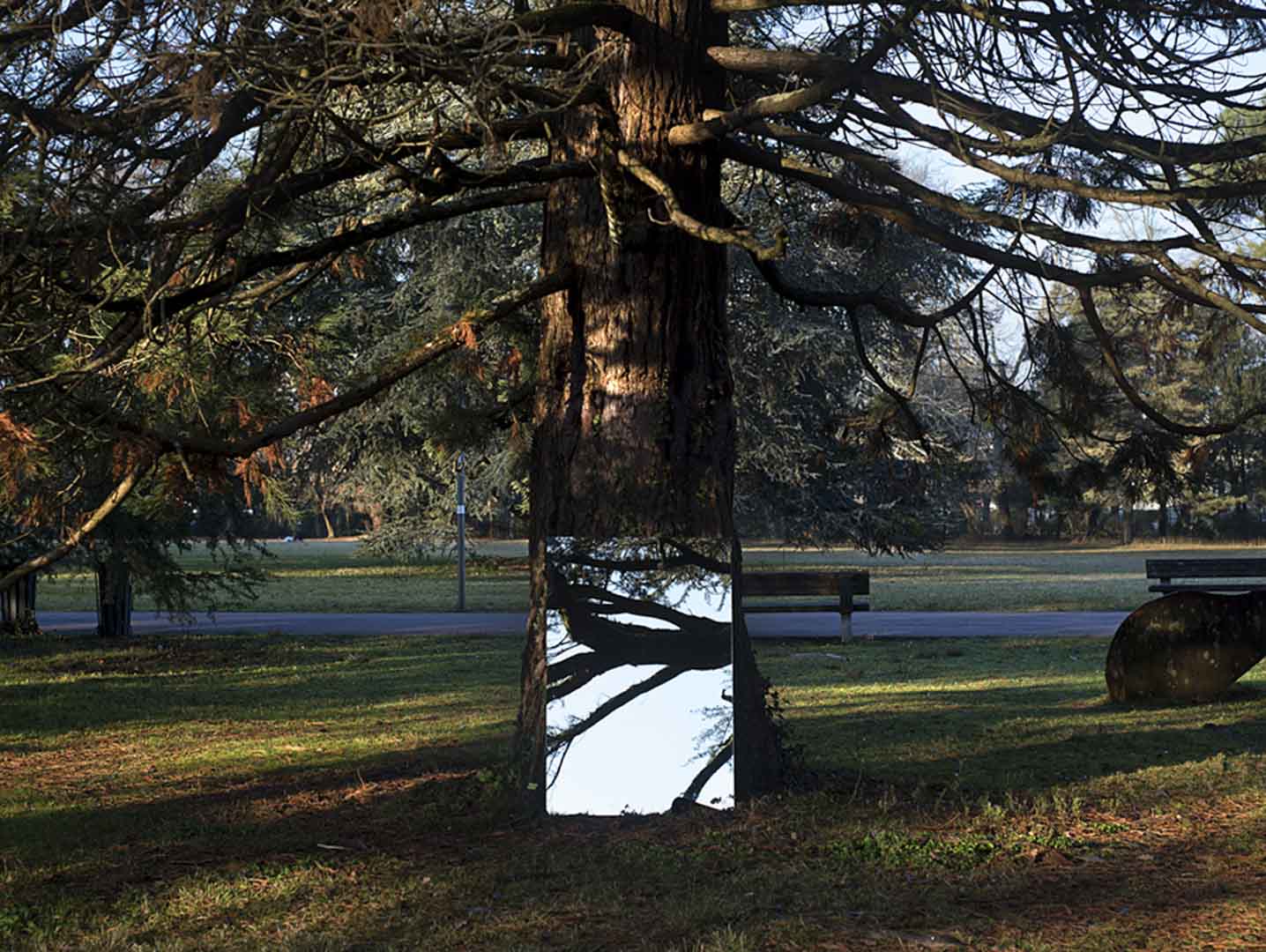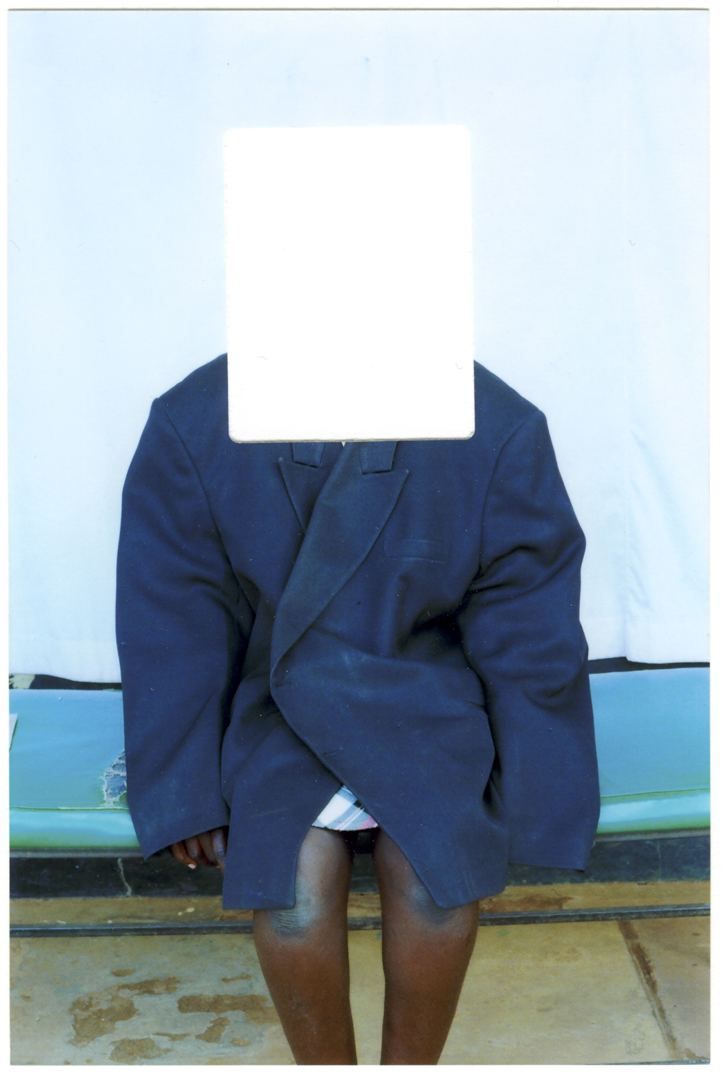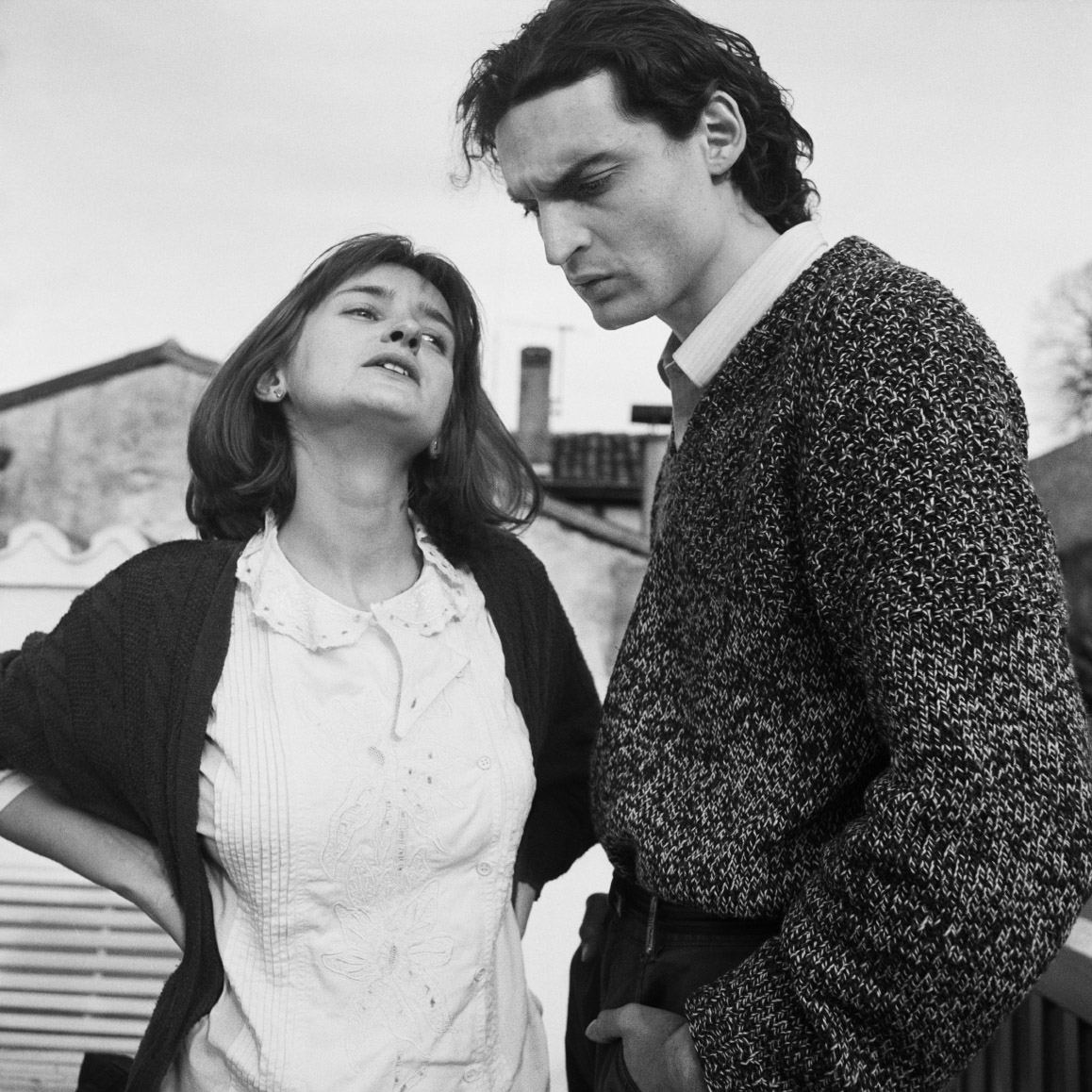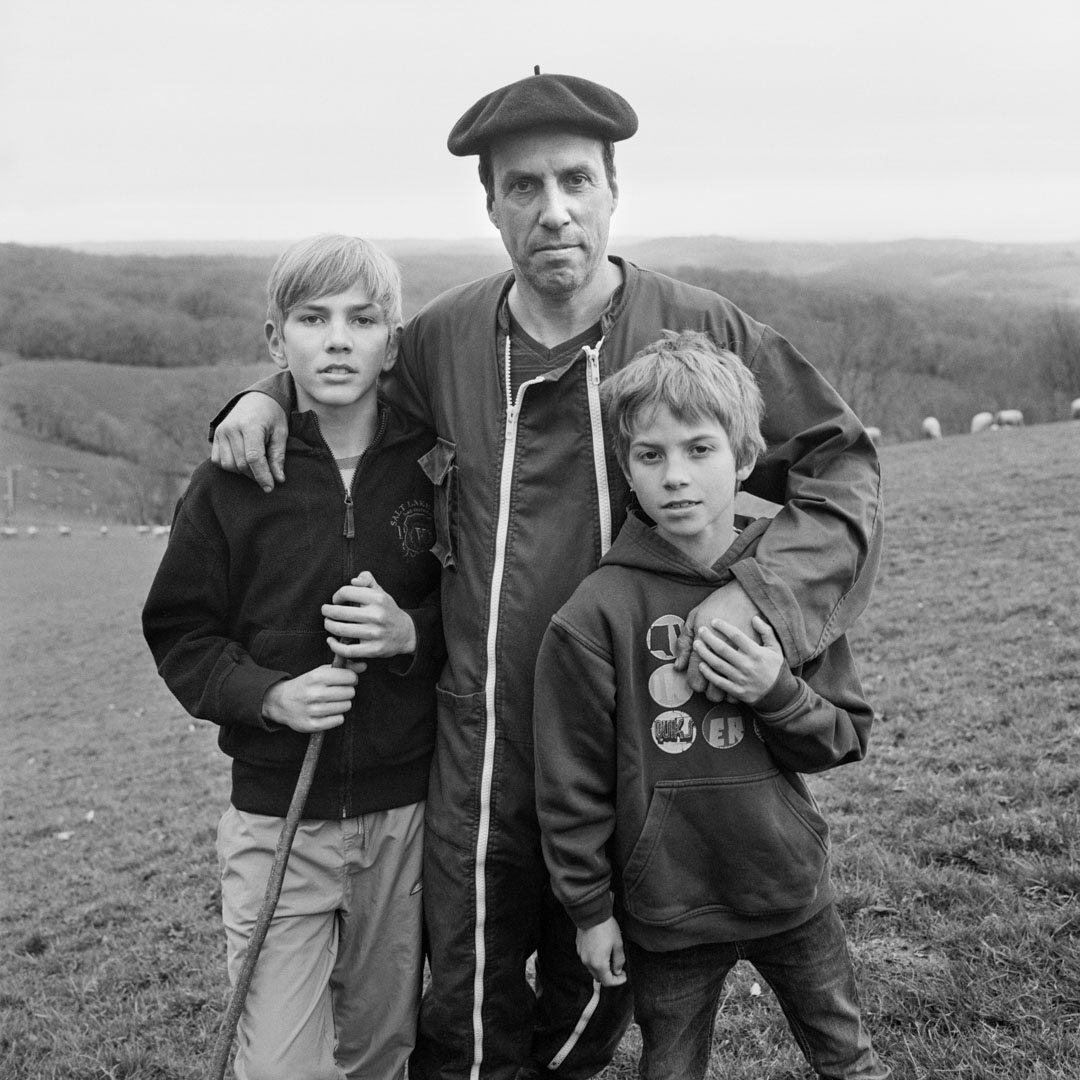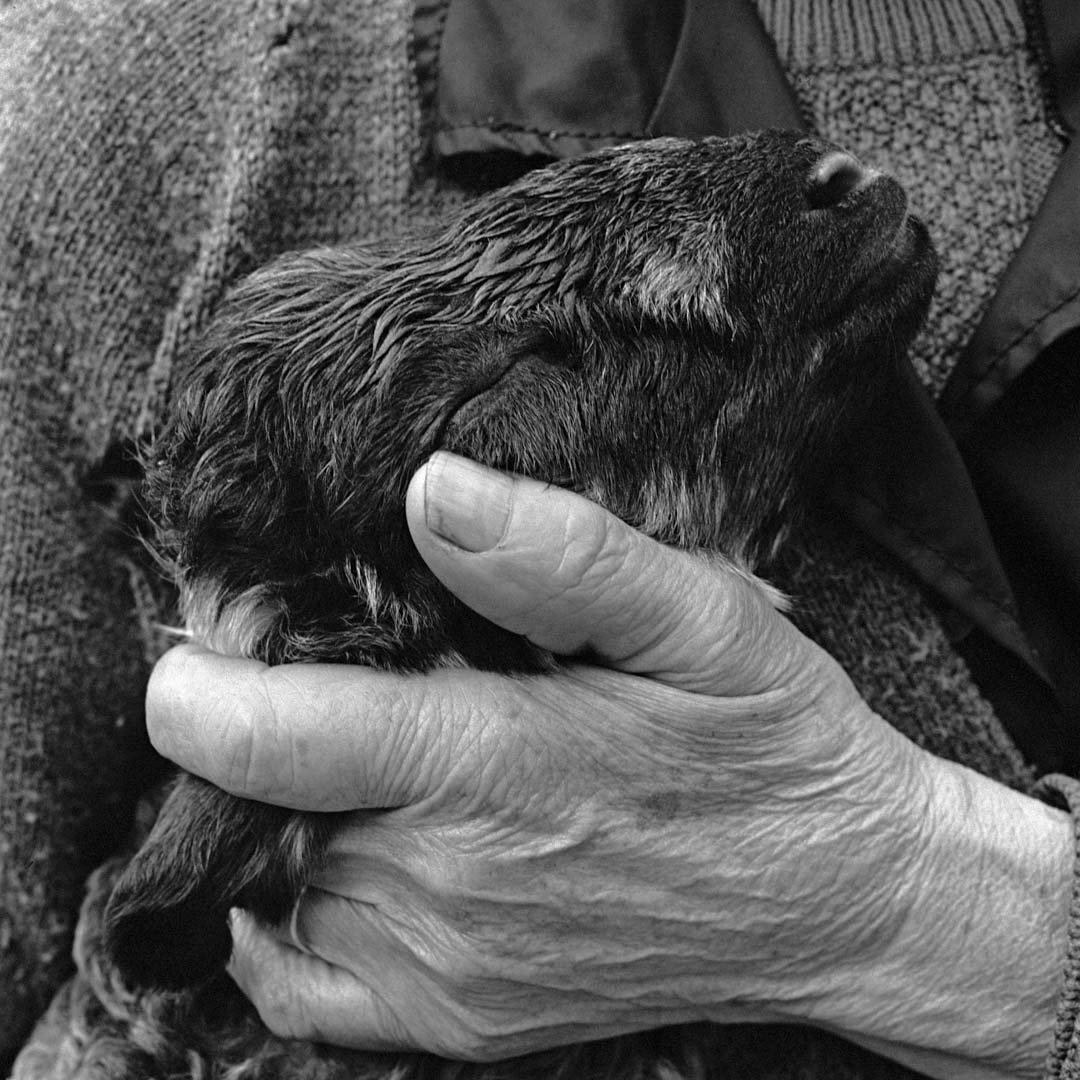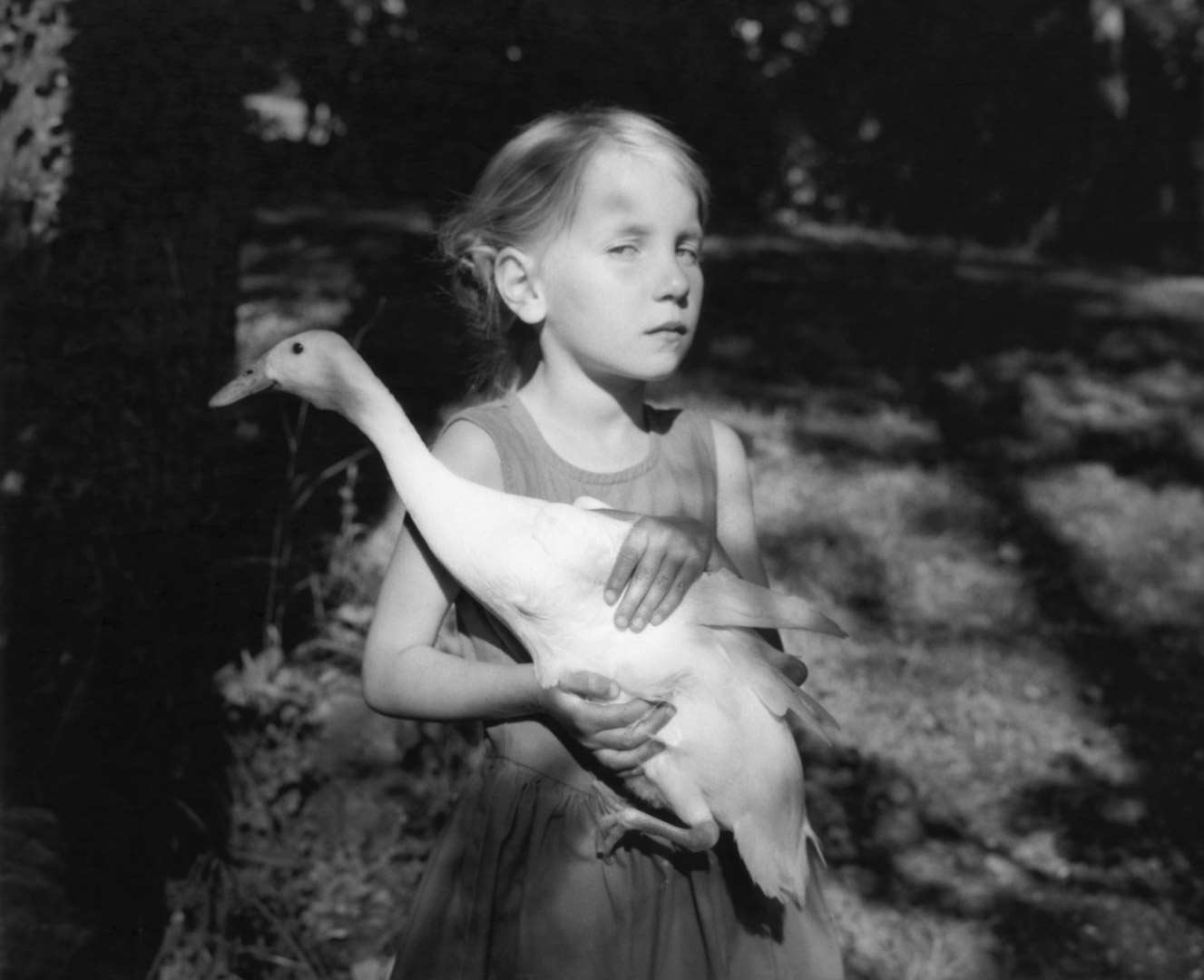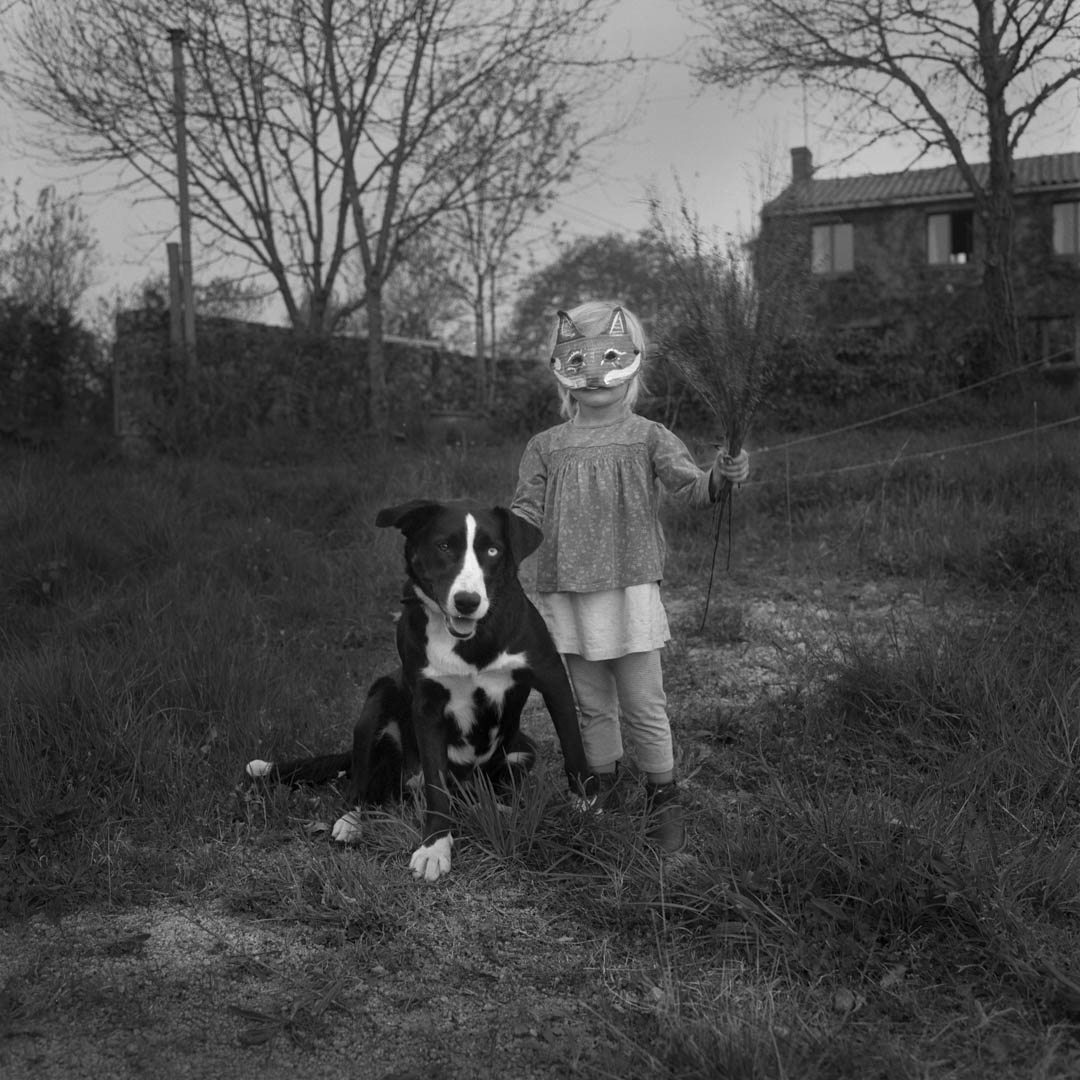Vanessa Winship -“She dances on Jackson, 2013”
Vieille Eglise – Rue de la Vieille Eglise – Mérignac
“I’m on my way home at the end of a day spent walking the streets. When I arrive at the dock in Jackson, a crowd is milling around a band. Not far away, I see a small group, two women and two young girls, standing. I try to guess if they are related. I have the proof when the taller of the two girls puts her hand in the neck of one of the women, seeking her approval, by this silent and intimate gesture of daughter to mother. The latter agrees with a calmness that suggests that she is used to allowing this kind of thing. The girl goes towards the music. She walks with ease to the center of the circle which opens as if the crowd was waiting for her to come. Her body moves freely, without any pose effects or adult parody. It is a dance of her own invention, entirely spontaneous. The moment continues for several more minutes, without the girl losing her breath or her rhythm, and the crowd shows its affection by surrounding the stage with a protective circle. When the train arrives, the girl’s mother stuffs a crumpled wad of bills into the hand of one of the musicians, and they jump into the car.”
– Vanessa Winship, Chicago, November 2012.
For more than a year, Vanessa Winship traveled the United States, from California to Virginia, from New Mexico to Montana, in search of the American dream. She dances on Jackson reads like a conversation, a poetic and rhythmic interplay between landscapes and portraits that explore the vastness of the United States, trying to understand the bond that is created between a territory and its inhabitants.
Darcy Padilla -“Family Love, 1993-2014”
Projection (10 minute video) at the Médiathèque Michel Sainte-Marie – 19 place Charles-de-Gaulle – Mérignac
In 1993, Darcy Padilla met Julie Baird during a report at the Ambassador, one of those hotels in the Tenderloin district of San Francisco that serves as an annex to overcrowded hospitals. She followed her She followed her for 18 years until her death, bearing witness through her to poverty, broken families, drug addiction, AIDS, violent relationships. From the back alleys of San Francisco to the backcountry of Alaska, Darcy Padilla tells the story of Julie’s life through births and deaths, losses and reunions, small joys and great pains. A moving epic of life and death.
“I first met Julie on February 28, 1993. Julie was 18 years old, standing in the lobby of the Ambassador Hotel, barefoot, with her pants open and an 8-day-old child in her arms. She lived in the SRO (Single Room hotel) area of San Francisco, a place with cheap housing and small soup restaurants. Her room was filled with clothes thrown on the floor, in the middle of ashtrays and garbage. She was living with Jack, the father of Rachel, her first daughter, who made her HIV positive. She left him a few months later to stop using drugs.”
– Darcy Padilla
This exceptional work was published by Éditions de La Martinière in 2014 under the title Family Love and received numerous prestigious awards including the W. Eugene Smith Humanitarian Photography Award, the John Simon Guggenheim Memorial Foundation, the Getty Images Grant for Editorial Photography, and several World Press Photo awards.
Magali Lambert -“En miroirs, 2021”
Parc du Vivier – 60 avenue du Maréchal-de-Lattre-de-Tassigny – Mérignac
Project carried out within the framework of the artistic residence proposed by the City of Mérignac.
“I began the series In Mirrors by observing the Vivier park and its reflections. On the buildings of the town hall and on the surface of the lakes, the vegetation, the animals and the sky print their changing colors, their abundant materials. A large mirror that I placed in different places in the park allowed me to create a luminous window magnifying the brilliance of the place. Fauna, flora and architecture are reflected in it. A building seems to have grown like a tree in the middle of its own, a barnacle goose observes its fellow creatures on the other side of the mirror, a hundred-year-old trunk becomes the guardian of another, younger one, needing its robustness to grow. The photographs were taken during the fall and winter. The bare branches and the ground littered with dead leaves set the scene for the series. The images of In Mirrors, presented in spring and summer, take place in the same setting. Each one operates, through the mirror and the scenography, a mise en abyme of the place as well as the photographic process. The mirror of the camera observes that of the park. The four seasons are juxtaposed. The times and spaces intermingle, thus initiating a particular dialogue between the park, the photographs and the visitors.”
Maia Flore -“Situations”
Parc du Vivier – 60 avenue du Maréchal-de-Lattre-de-Tassigny – Mérignac
In Situations, a young girl moves through all kinds of weather across landscapes that seem unexplored. In search of an indescribable freedom, she travels to find and create ephemeral settings in nature. Dressed in red she is spotted by the sun and buried in the fog. As if to rediscover space, she walks on these clouds that touch the ground and then evaporates into the landscape when the sun returns to chase away the mystery. Like a game between reality and imagination, the opposition of a clairvoyance and a temporary madness, the young girl is amused by the confusion of feelings.
“Maia Flore believes in the virtues of a photography finally rid of the raw reality. The real has interest only transfigured. With her person as a model, or rather as an acting subject, she has fun staging improbable poetic and metaphorical situations.”
– Francois Cheval
Martina Bacigalupo -“Gulu Real Art Stuio, 2014”
Parc du Vivier – 60 avenue du Maréchal-de-Lattre-de-Tassigny – Mérignac
No one would remember the “Gulu Real Art Studio”, in northern Uganda, if the Italian photographer Martina Bacigalupo had not one day pushed open the door and discovered a strange practice. The practice of taking large portraits of clients, cutting out a 35x45mm rectangle from the prints, which corresponds to the administrative format of identity photos, and throwing away the rest. It is precisely this waste that intrigued Martina Bacigalupo, these headless bodies, these radically disembodied images that she recycles and reunites, reconstituting without her knowledge the great family of the absent, the ghostly community of the inhabitants of Gulu, whose postures and clothes are the only way to find unity today. She discovered their moving stories that describe the political, economic and social conditions of Africa’s Great Lakes. These testimonies accompany the photographs collected in the book published by Steidl and The Walther Collection in 2013.
“In her rescue work, Martina Bacigalupo continues an artistic practice that emerged in the 1970s and consists of recycling and reorganizing existing images. At a time when billions of images are available on the Internet and the question of the meaning of making new ones arises, the meaning she gives to these excluded images is a real artistic work. It is the formatting that gives a function, the one that transforms the editor into an author.”
– Christian Caujolle
Anne Rearick -“Pays Basque, 1990-2020”
Bois du Burck – Avenue Bon Air (entrée stade Cruchon) – Mérignac
In 1990, Anne Rearick left the East Coast of the United States to spend a year photographing the daily life of Iparralde, in the French Basque Country. Here, time seems to stand still. So she seeks to capture moments of purity and authenticity. Her images, taken far from the upheavals of modern life and the hustle and bustle of the city, express the richness of an existence that follows the rhythm of nature and takes root in the earth. Through her tender and sincere approach, without artifice, her capture of the subtle vibrations of light, Anne Rearick gives a very accurate account of this region that seeks to preserve its own culture. For 32 years, she has continued to photograph this country.
“I first arrived in Saint Jean-Pied-de-Port to photograph rural life in 1990. The day I arrived, an elderly woman, Madame Hatoig, invited me into her house while it was pouring rain, she gave me slippers, hot tea and madeleines, showing an unusual generosity and hospitality. From then on, I felt at home in the Basque Country. It is at the heart of my work as a photographer and its changes have contributed to my own evolution, to my work as a documentarian, seeking to capture the places and the spirit of these places. Shepherds, café owners, students, letter carriers, as well as farmers let me enter and photograph their intimacy, in their kitchen, their barn or during their night walks. I tried to transcribe in my own way what this region inspires me. At the rhythm of the seasons, I lived like these Basques, to relate in images the family stories and the human relationships, everything that shapes this magnificent country.
– Anne Rearick
Arja Hyytiäinen -“Ile d’enfance, 2019”
Bois du Burck – Avenue Bon Air (entrée stade Cruchon) – Mérignac
“…Those days when time seemed to stretch. Like a founding ritual, every summer, filled with the cuckoo’s call and the fly’s buzzing behind the glass. The black fingertips of blueberries. The distant scent of wild rosemary. The days in nature and the landscape of my childhood, all these reminiscences that return through my daughter… The Ile d’Enfance series deals with childhood and identity from the point of view of the child, and my own memories. I work on this series partly in a posed way but also with spontaneous shots depending on the situation. As a photographer and mother, I follow and share my daughter’s development, the events of everyday life, the legs that hurt as she grows, the impatience of her grandmother’s visit or the death of the cat, all of which awaken my memories and have inspired my photographs in recent years. The images are partly composed in Finland, on an island where we go every August. Maybe this island has become the whole of Finland for my daughter, in any case the granite and the power of nature are very present during these stays. Another part of the images is composed where we live all year long in France. The places are not important in themselves, but when you belong to two nationalities it creates a permanent duality that hides in a secret garden, like a house inside you. It is this place, this identity that I am looking for in this series of images.”


